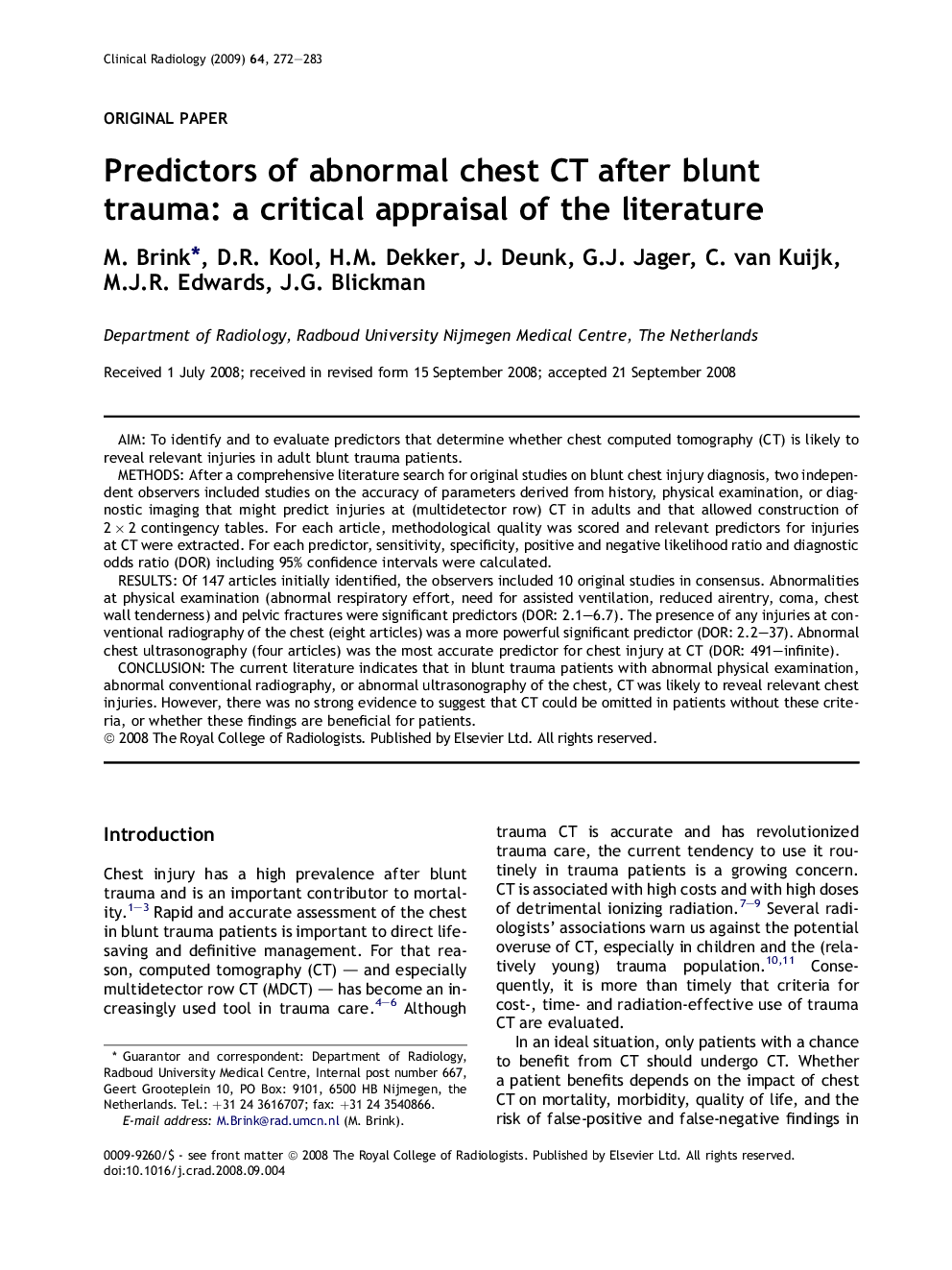| Article ID | Journal | Published Year | Pages | File Type |
|---|---|---|---|---|
| 3983311 | Clinical Radiology | 2009 | 12 Pages |
AimTo identify and to evaluate predictors that determine whether chest computed tomography (CT) is likely to reveal relevant injuries in adult blunt trauma patients.MethodsAfter a comprehensive literature search for original studies on blunt chest injury diagnosis, two independent observers included studies on the accuracy of parameters derived from history, physical examination, or diagnostic imaging that might predict injuries at (multidetector row) CT in adults and that allowed construction of 2 × 2 contingency tables. For each article, methodological quality was scored and relevant predictors for injuries at CT were extracted. For each predictor, sensitivity, specificity, positive and negative likelihood ratio and diagnostic odds ratio (DOR) including 95% confidence intervals were calculated.ResultsOf 147 articles initially identified, the observers included 10 original studies in consensus. Abnormalities at physical examination (abnormal respiratory effort, need for assisted ventilation, reduced airentry, coma, chest wall tenderness) and pelvic fractures were significant predictors (DOR: 2.1–6.7). The presence of any injuries at conventional radiography of the chest (eight articles) was a more powerful significant predictor (DOR: 2.2–37). Abnormal chest ultrasonography (four articles) was the most accurate predictor for chest injury at CT (DOR: 491–infinite).ConclusionThe current literature indicates that in blunt trauma patients with abnormal physical examination, abnormal conventional radiography, or abnormal ultrasonography of the chest, CT was likely to reveal relevant chest injuries. However, there was no strong evidence to suggest that CT could be omitted in patients without these criteria, or whether these findings are beneficial for patients.
